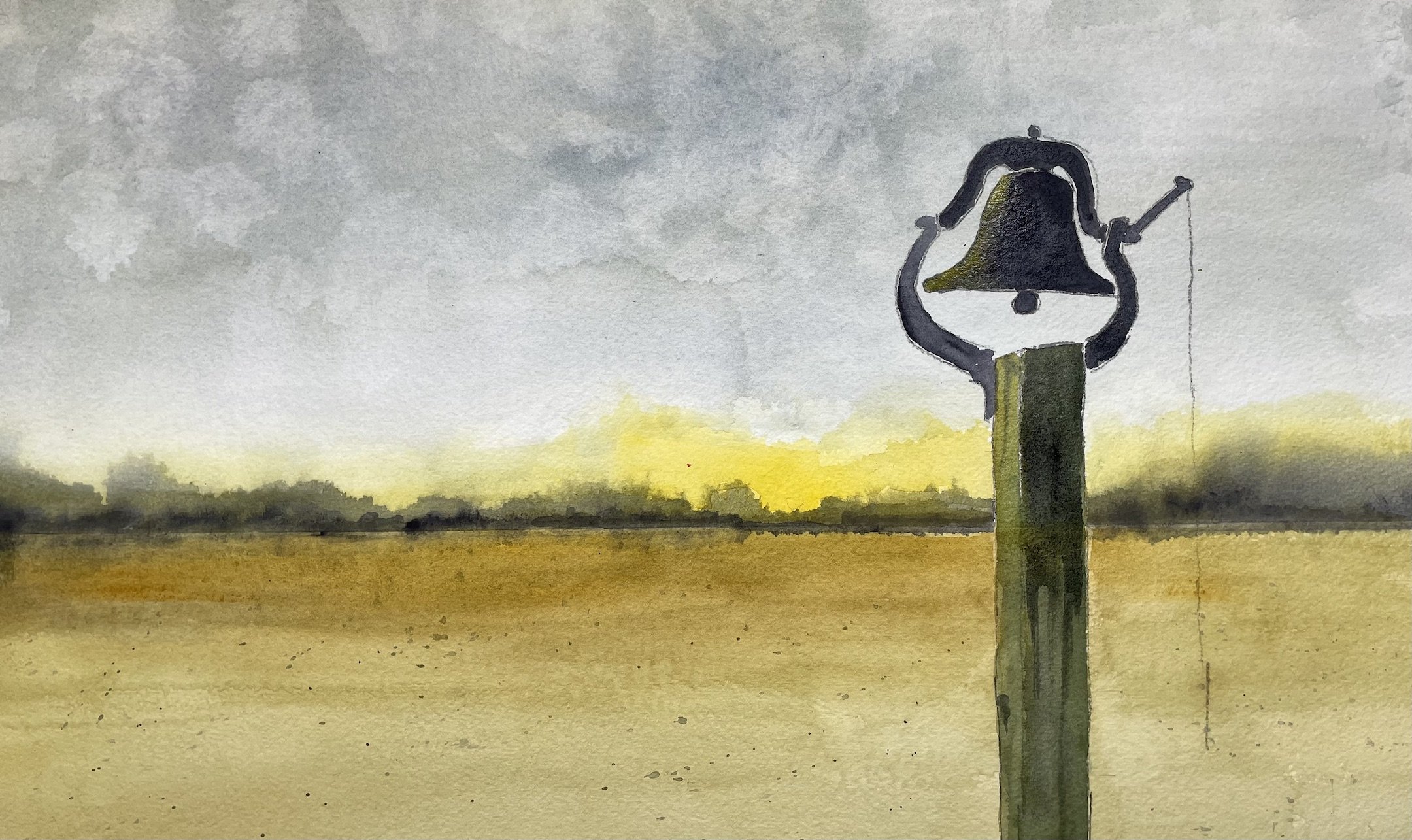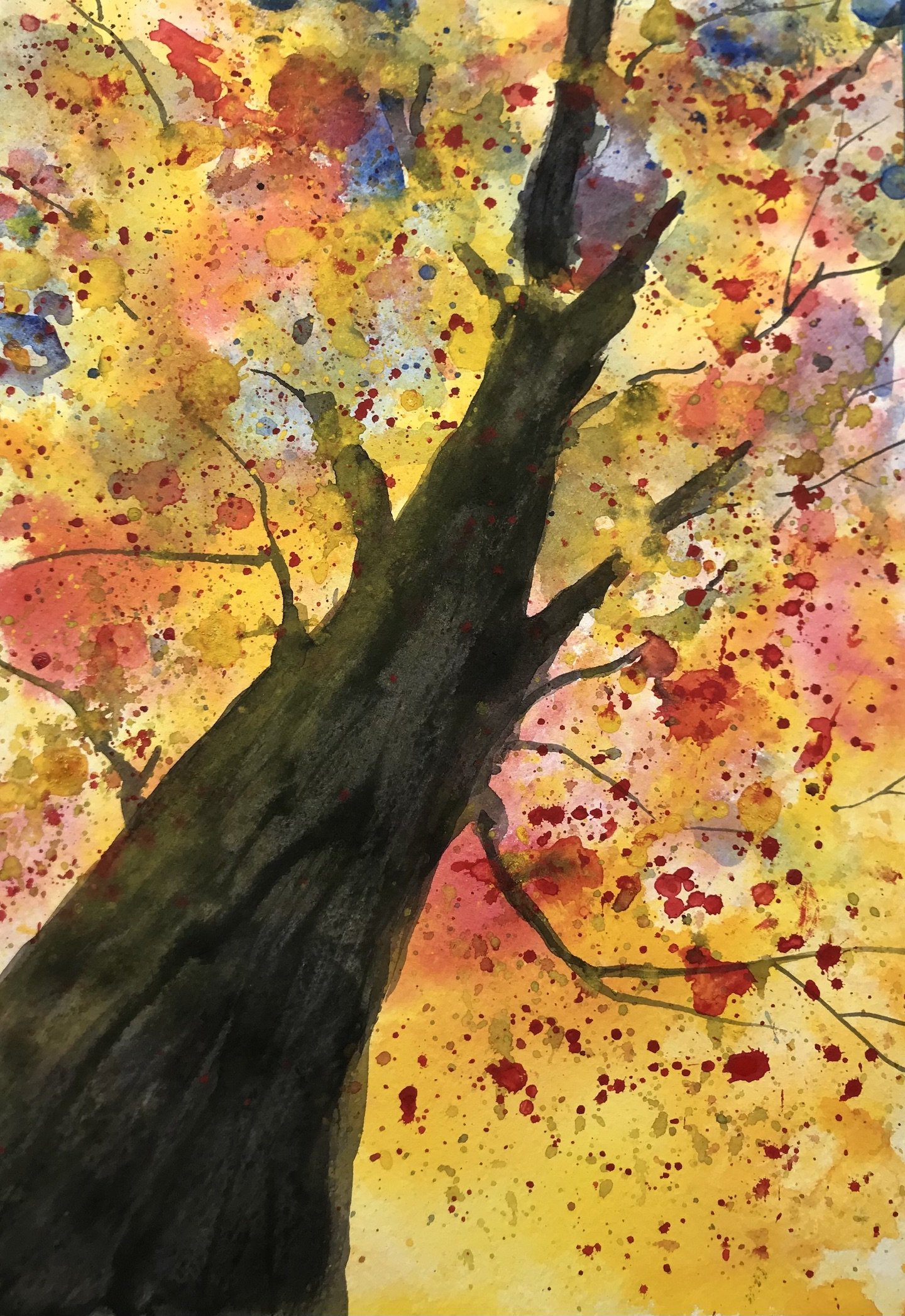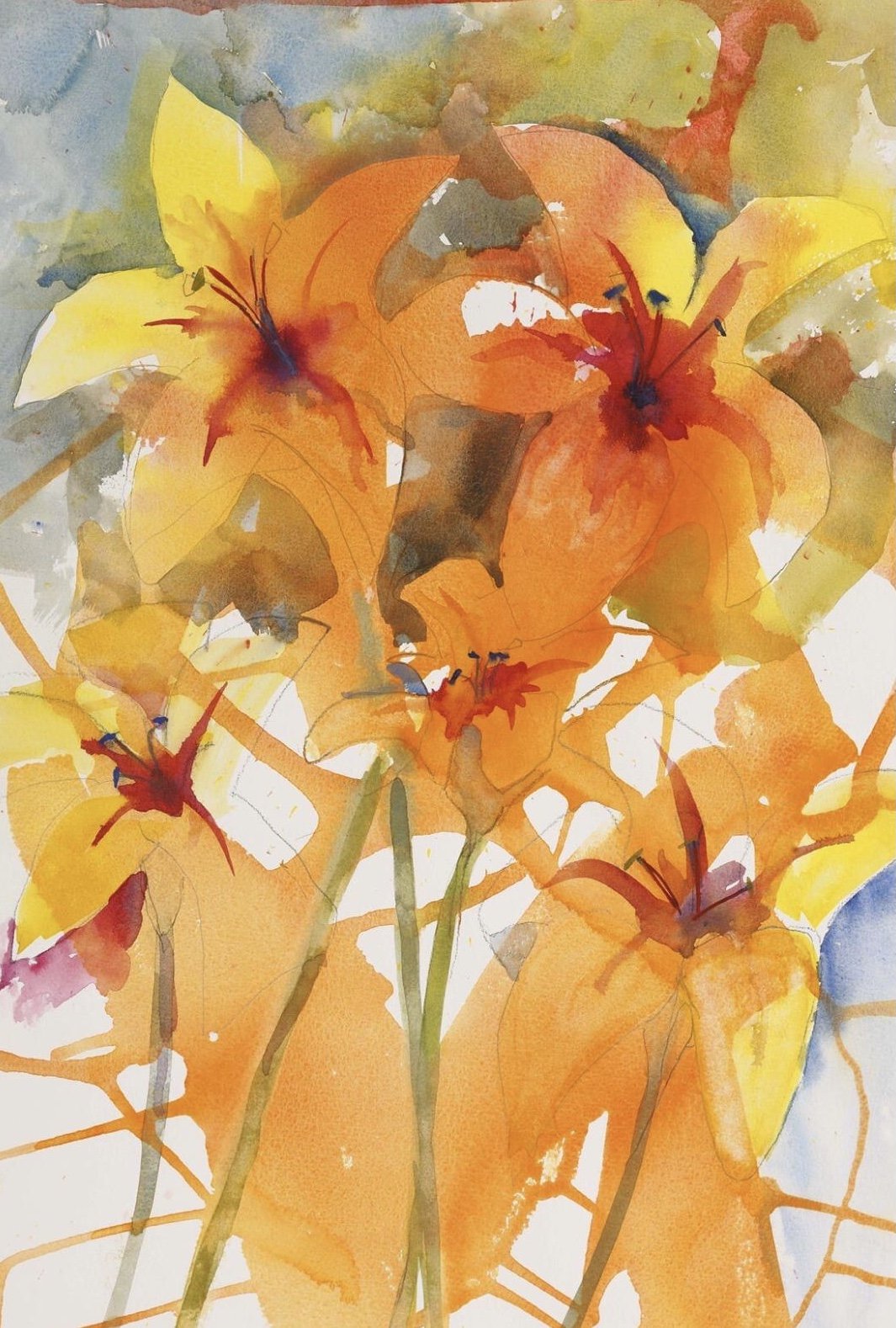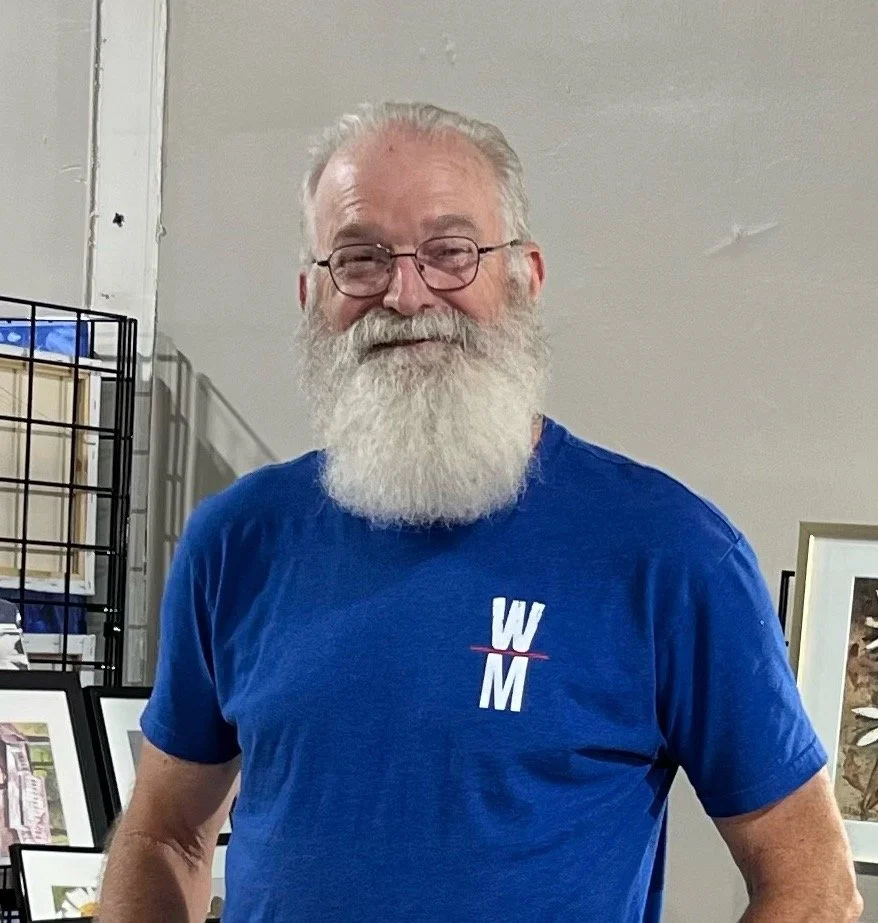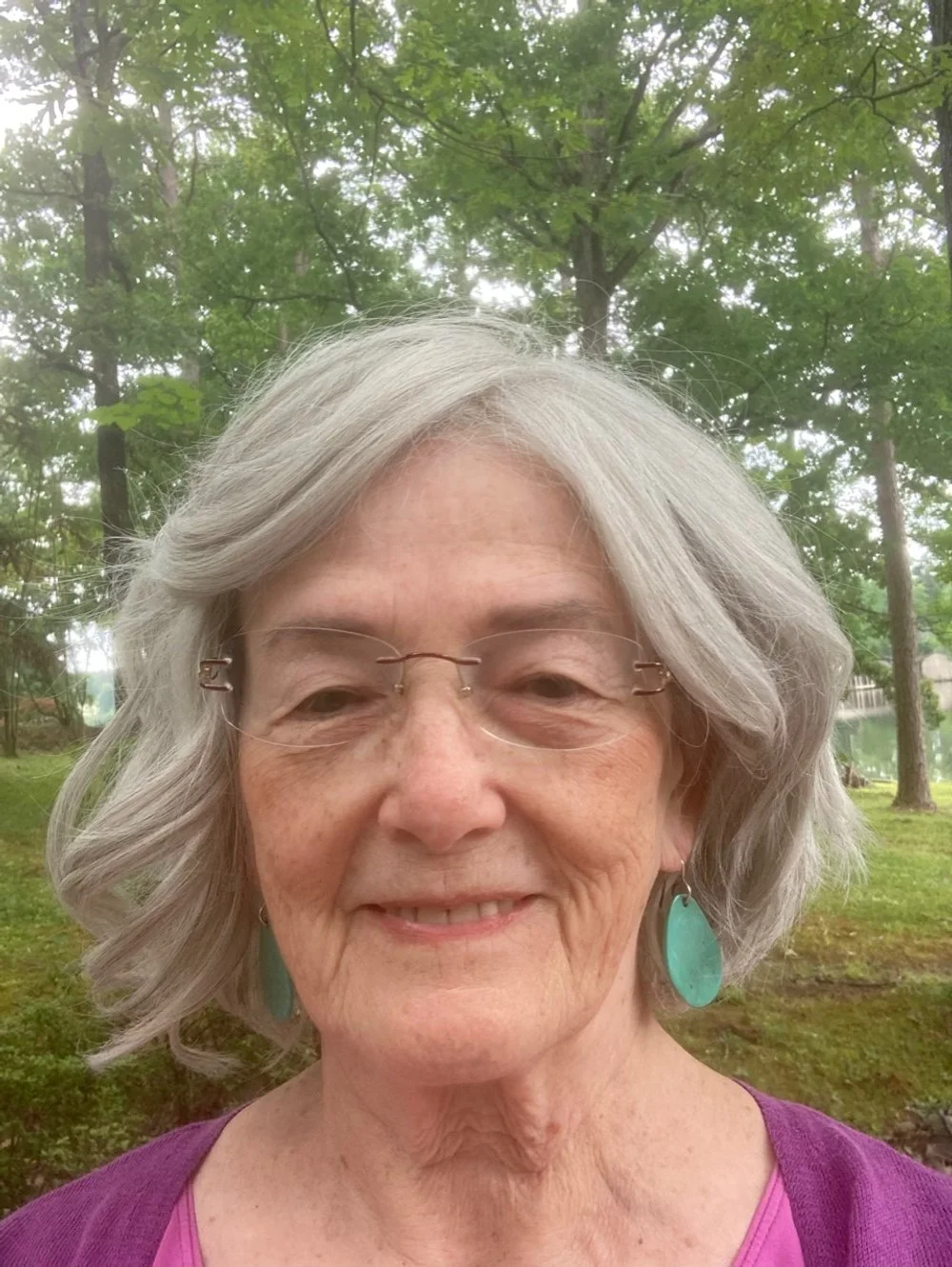Interview with artist Gary Alexander
Gary Alexander in a watercolorist living in Little Rock. His intriguing landscape and still life paintings are stories he wants the viewer to complete. Gary’s work is in collections all around the country. More of Gary’s work can be found at his Facebook page and at his website garyalexanderfineart.com.
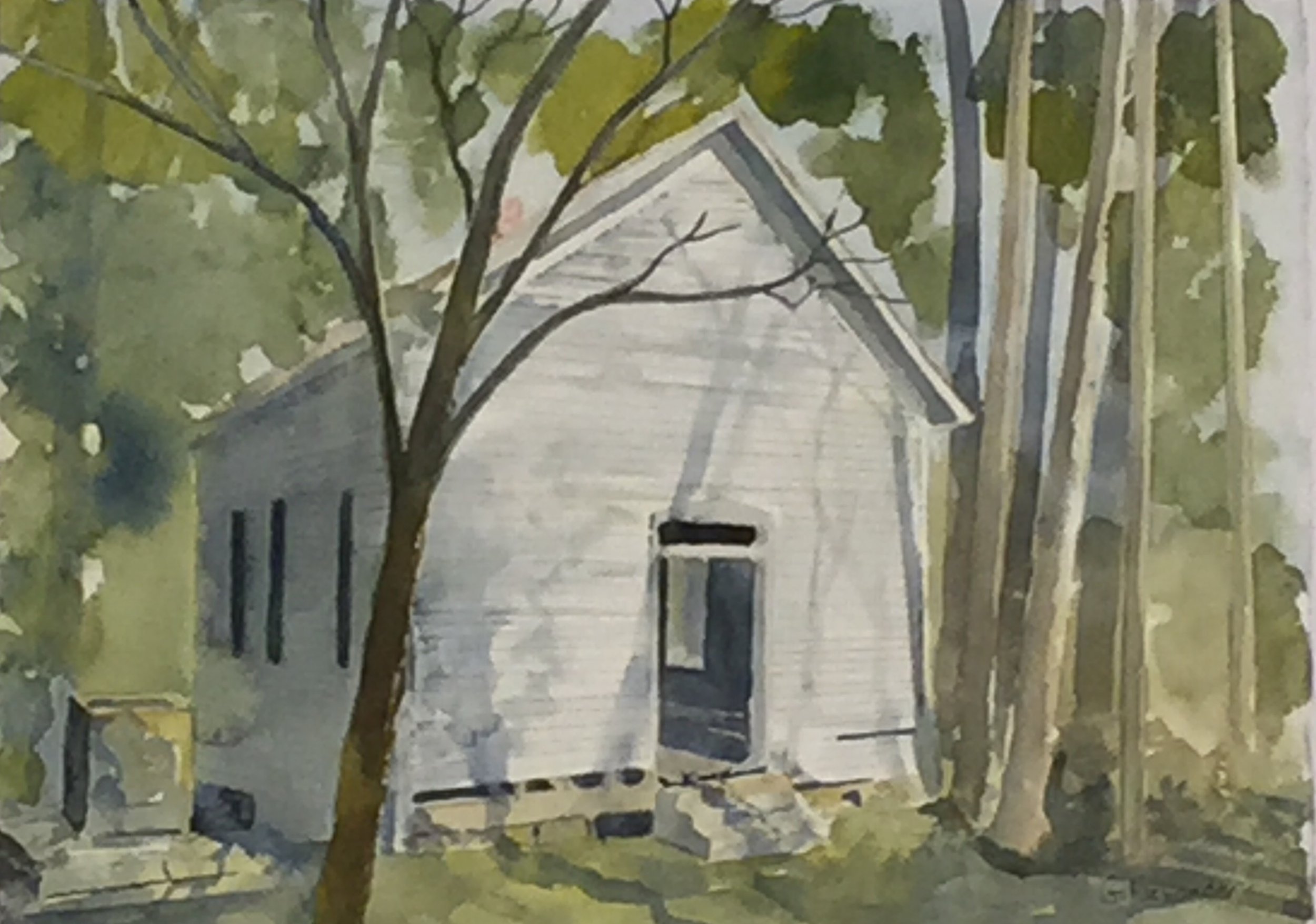

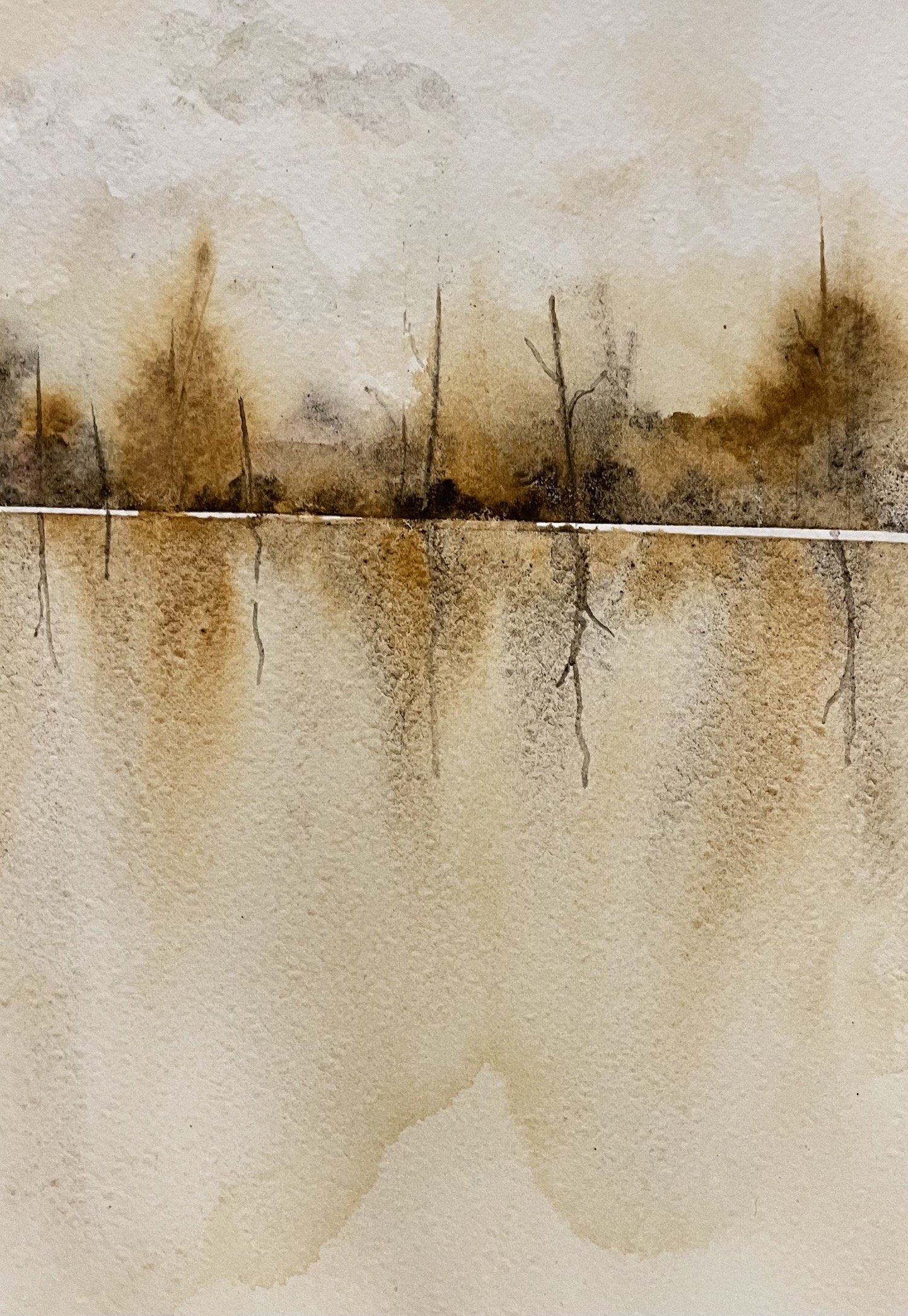
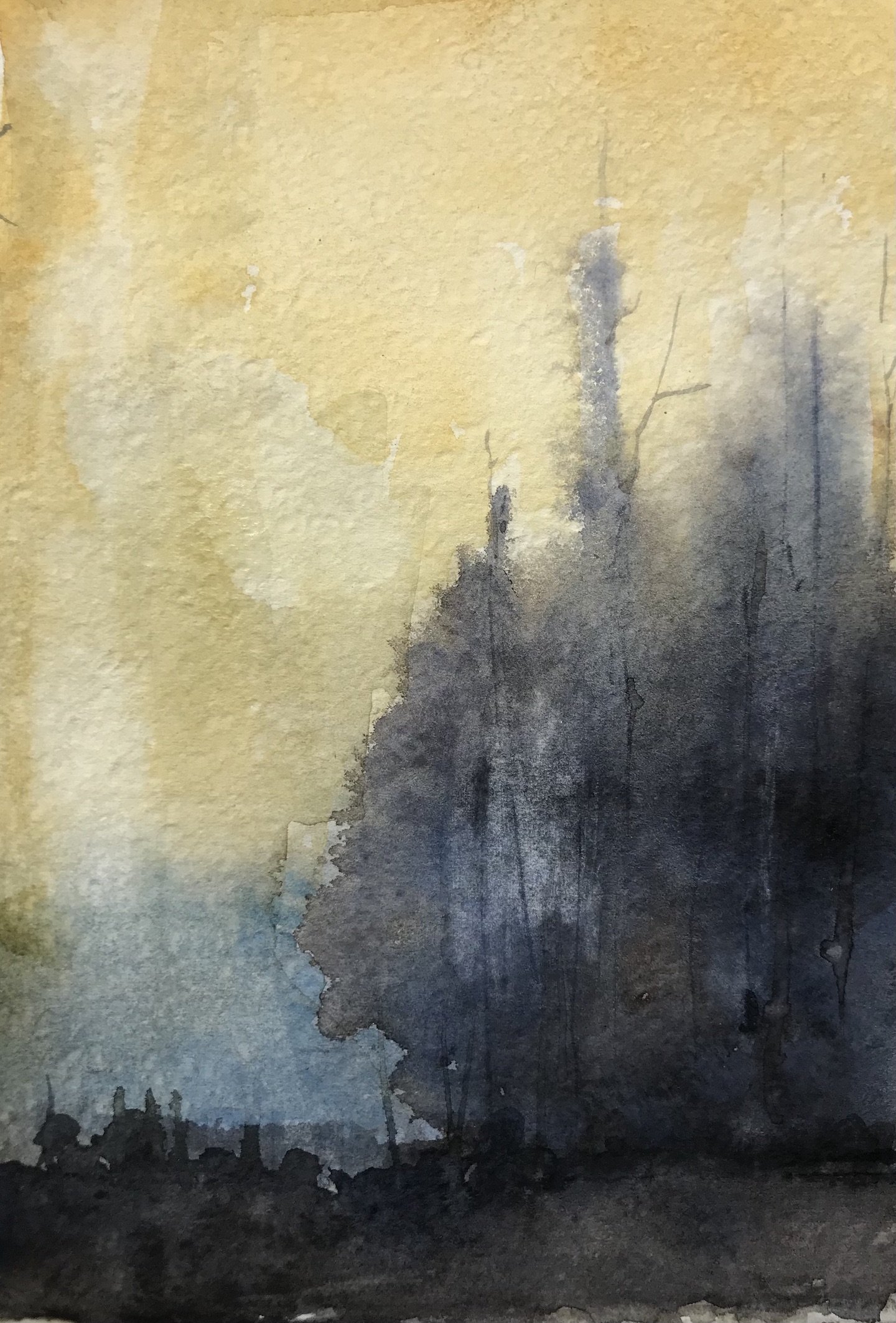
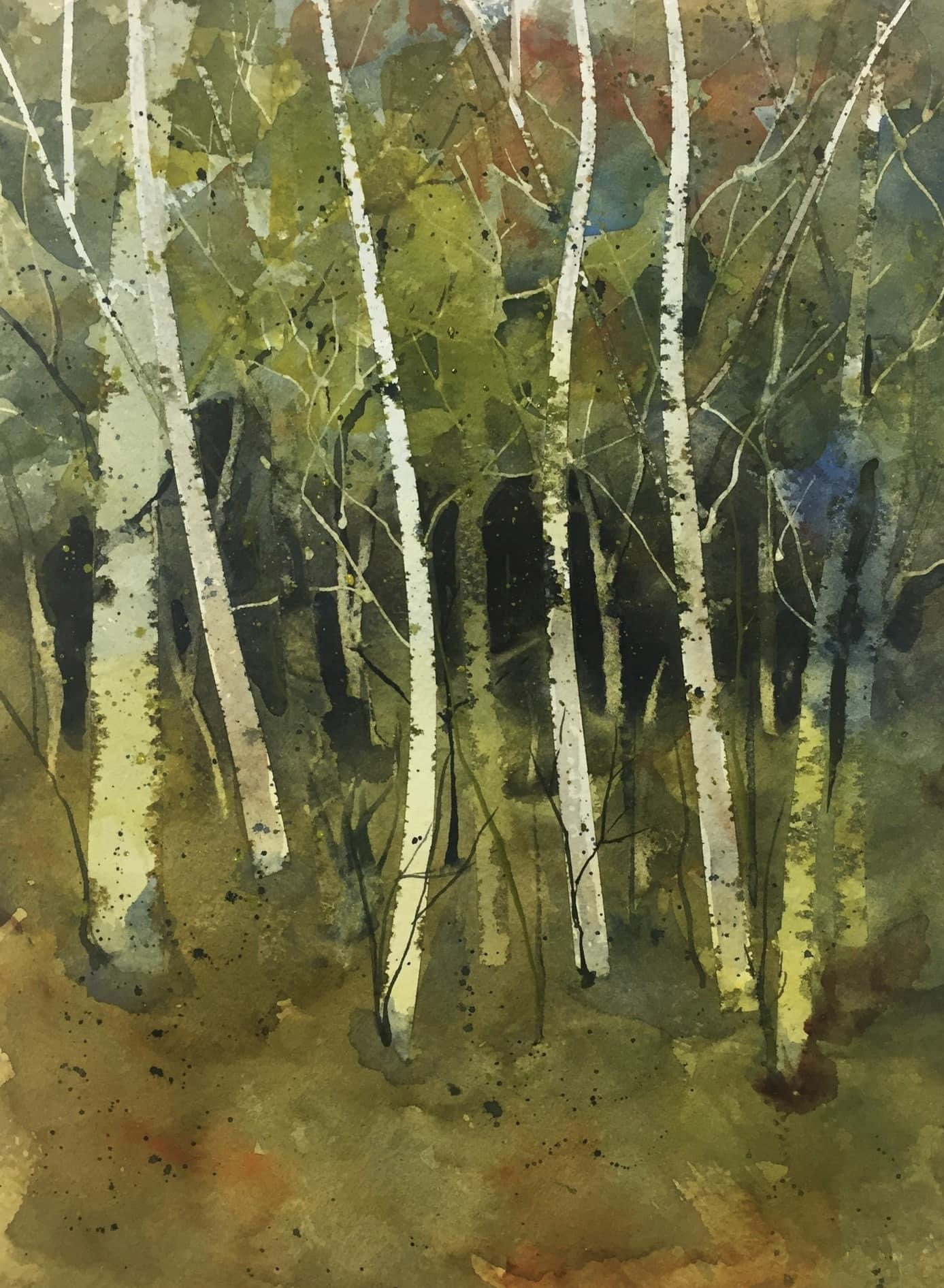
AAS: Gary, has Arkansas always been your home?
GA: I grew up in Shreveport Louisiana. After high school I was undecided on what to do. I had an uncle in Little Rock in the graphic arts business. In the early days, offset printing and the prepress business were separate businesses. I had an opportunity to start an apprenticeship there, so I did. It proved to be a good opportunity for me. I never really wanted to go to college. Two weeks after graduating high school I moved to Little Rock and a few months later I married my high school sweetheart. We’ve been here over 50 years now, have three children and seven grandchildren.
AAS: Tell me more about your printing business.
GA: I was in the printing business for almost 50 years. After becoming a journeyman at my craft, I had an opportunity to become a supervisor then moved on to upper management. In the late 90s I got into sales until I retired few years ago. Being in that business I was exposed to many commercial artists, who would now be called graphic designers. Many of them worked for advertising agencies or independently and such and were our clients, artists like Richard Stephen and Gary Simmons who you’ve interviewed. Most of them were doing watercolor and that was an inspiration to me. But it wasn’t until I turned 50 that I decided I was going to learn how to paint, and it was going to be watercolor. I took classes for 17 years.
AAS: So, you took up painting seriously relatively later in life? Did you do any painting as a kid?
GA: I always was interested in art as a child but never really knew what to do with it. You remember those Draw Me ads in comic books? I loved to do that. I did take an art class in high school, and I liked it. But my parents with their background and upbringing didn’t know how to feed that. When I decided to take it serious at 50, I learned that the Arkansas Arts Center offered classes and I jumped on board. Doing that introduced me to many wonderful artists and new friends. My time in the printing industry help me in watercolor. In the early days I was called a stripper. No, not that kind! To expose the printing plates, we had to prepare the film in a dark room. This required a series of masking and exposures. Because I knew how to mask, I was able to quickly incorporate that technique into some of my watercolors.
AAS: What I like most about your paintings is that while they are mostly representational, they are often mysterious. I think a good example of this is Tucker Lodge. I love the way you used color in this one.
Tucker Lodge, 11” x 15”, watercolor on paper
GA: Tucker Lodge was inspired by a weekend trip that was very life changing for me. It’s on Lake DeGray. I love the mystery of shorelines. When I think of the shoreline it reminds of how I am called to live in God’s light, but often we have a forest to walk through.
The trees in the foreground were done with a product called tar gel. It gave them dimension. The process I used is layering and wetting the paint and allowing it to flow with the water. I like the mystery of what might happen. But part of the mystery is knowing when to stop. Some say watercolor is hard. I did not know better because I had never tried another medium, I just started in watercolor. Richard Stephens would say, “If you are looking for a medium to control, you better look to a medium other than watercolor.”
AAS: Tell me about Boxley Barn. The way you used washes is so effective.
Boxley Barn, 10” x 12”, watercolor on paper
GA: Boxley Barn was painted from a photo a lady I know took in Boxley, Arkansas during a snowstorm. That old stone structure was probably around for a 100 years. Just imagine the stories that must be around it – what it was used for and who built it. In painting it, you know, snow is so much more than white. That is the challenge of the snow. In something like that, less is more but still creating shadows with greys and blues and yellows. Of course, old structures have so many stories behind them. It’s telling one now… do you hear it!
AAS: You must get inspiration from the beautiful Arkansas landscapes. Do you do any plein air painting? Are you much of an outdoorsman?
GA: Although I originally took up watercolor to paint outside, I rarely did it. I do enjoy landscapes and shorelines, but old buildings are also a favorite and there are plenty around Arkansas. I do enjoy the outdoors and have hiked 100s of miles in Arkansas as well as other areas of the US. That is another one of my addictions, but my knees are not letting me do as much as I’d like to. So, I also spend lots of time in my own garden as it can be a place of inspiration.
AAS: Death to Life is a wonderful piece. It must have been fun to paint.
Death to Life, 12” x 10”, watercolor on paper
GA: Forest floors have so much to show us. Trees are some of my favorite subjects to paint because they have so much meaning. My whole living room has nothing but paintings of trees. You can imagine early spring leading to the lush growth of green of summer. Then comes the color of fall leading to the death of winter, only to start all over again in spring. Trees and leaves have so much symbolism of life. For life to happen death has to occur. Nature rejuvenates itself.
AAS: You’ve done several doorknob paintings like White Door. You really bring out the beauty in such an overlooked object.
White Door, 15” x 11”, watercolor on paper
GA: Doors and windows have always been a symbol of passage and decisions. I love the mystery behind each one. I started painting doors a number of years back. There used to be an old firehouse in MacArthur Park Historic District in Little Rock that is now the Firehouse Museum and Hostel of Arkansas. I painted the doors of the fire station from a photograph – they were opened in all different directions suggesting different passages. Most of the people who saw the painting told me it spoke to them about decisions they had to make in life. Doors and windows are kind of a universal symbol of passage and decision making. It was intriguing to me to not paint a whole building, just paint a part of it and let the viewer fill in the rest.
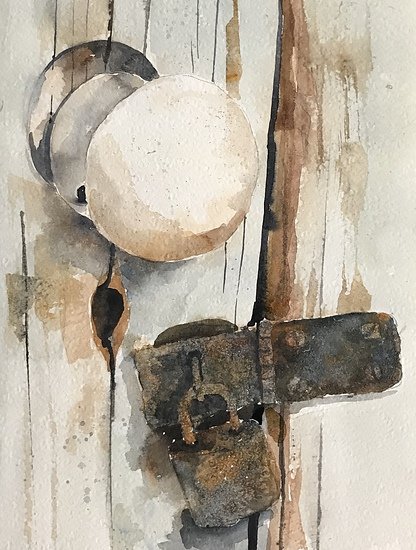
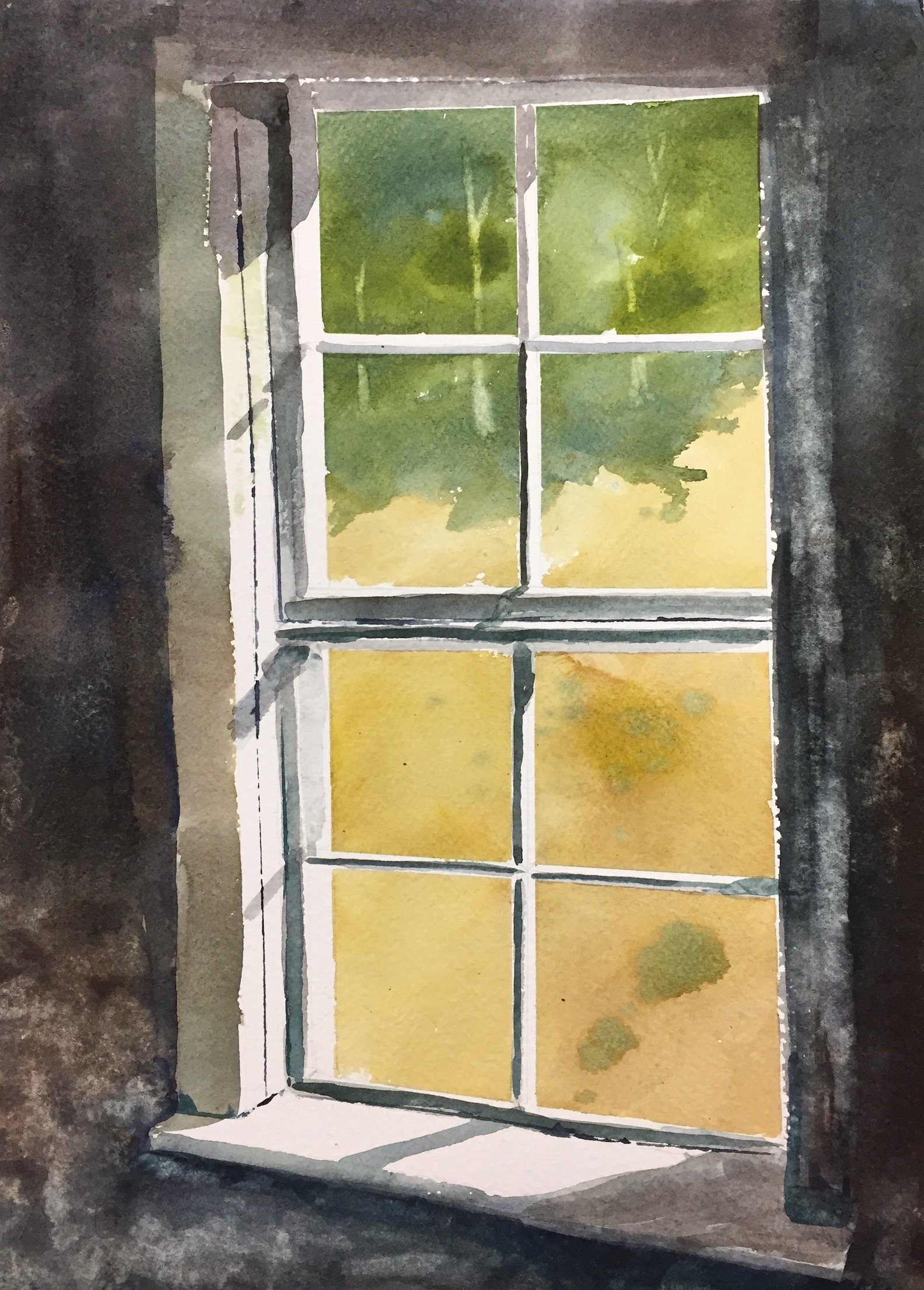
AAS: Rooted But Not Forgotten is such a wonderful scene. Tell me about it.
Rooted But Not Forgotten, 15” x 11”, watercolor on paper
GA: I had a friend approach me one day with a photo of this old truck. It was her grandfather’s truck he had set out in the pasture. She asked it would paint this and I said sure. That tree looks to me at least 30 years old! I instantly had a title for it, Rooted But Not Forgotten. Many old farmers move vehicles or equipment out to the pasture thinking it might of use later. I heard a quote the other day that a true sign of a good southern guy is how much equipment he has that almost runs.
AAS: I know you are a member of Mid-Southern Watercolorists. Tell me about that group.
GA: I’ve been a member of the Mid-Southern Watercolorists for a long time. It’s one of the biggest communities of artists. I think it is an absolute must to be a a part of a community of peers. You have to have people around you to encourage you. The art community here is a very blended group of people. But you can find a common ground and be friends in the art community and help each other. The MSW really tries to cater to that and encourage artists in water media at whatever stage they are. We meet monthly, but we don’t call them meetings. I told them if all we’re going to have are meetings where we talk about rules and numbers and such, I am moving on. I want to get together to paint and encourage each other and learn, so we started calling them gatherings instead of meetings. I said earlier that I took lessons for 17 years, but I am still learning. Instruction is important along with encouragement. I do teach small group lessons out of my studio, Simple Color Creations, to mostly beginning artists and that’s a lot of fun and is rewarding. MSW sponsors exhibitions and sales and I also sell in other art shows from time to time. But I mostly sell from Facebook and my website. I sell originals, prints and notecards. I think the thing that folks enjoy most is my notecards.
AAS: Do you like doing commission work?
GA: If it means I can tell a story because I like to paint stories. I do commission work often, mostly from individuals. I get requests, like someone will say, you know I have a photo of my mom’s old house she grew up in and it’s the kind of painting that would mean nothing to anyone else but that person. There in comes the story. The best compliment, outside of a check is, “Thank you for painting my memory.” My style, in my opinion, is Americana and I think paintings, at least mine, should have a story. People are interested in a story. You are like a writer or musician. You are inviting them into the painting.
